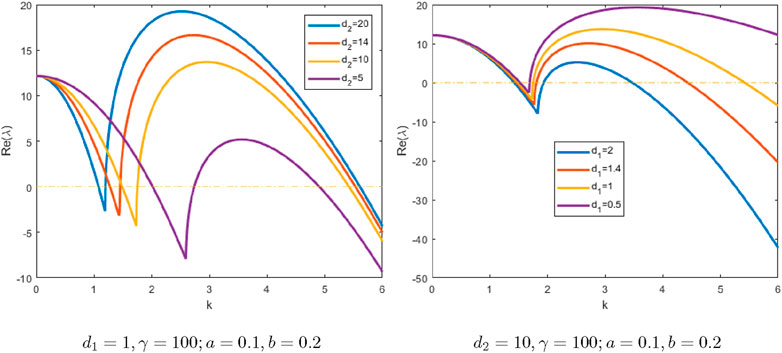- 1Teaching Department, Inner Mongolia Open University, Hohhot, China
- 2Capital Medical University Second Clinical School, Capital Medical University, Beijing, China
- 3Department of Mathematics, Inner Mongolia University of Technology, Hohhot, China
- 4Institute of Computer Information Management, Inner Mongolia University of Finance and Economics, Hohhot, China
Effective exploration of the pattern dynamic behaviors of reaction–diffusion models is a popular but difficult topic. The Schnakenberg model is a famous reaction–diffusion system that has been widely used in many fields, such as physics, chemistry, and biology. Herein, we explore the stability, Turing instability, and weakly non-linear analysis of the Schnakenberg model; further, the pattern dynamics of the fractional-in-space Schnakenberg model was simulated numerically based on the Fourier spectral method. The patterns under different parameters, initial conditions, and perturbations are shown, including the target, bar, and dot patterns. It was found that the pattern not only splits and spreads from the bar to spot pattern but also forms a bar pattern from the broken connections of the dot pattern. The effects of the fractional Laplacian operator on the pattern are also shown. In most cases, the diffusion rate of the fractional model was higher than that of the integer model. By comparing with different methods in literature, it was found that the simulated patterns were consistent with the results obtained with other numerical methods in literature, indicating that the Fourier spectral method can be used to effectively explore the dynamic behaviors of the fractional Schnakenberg model. Some novel pattern dynamics behaviors of the fractional-in-space Schnakenberg model are also demonstrated.
1 Introduction
Fractional calculus can be used to better describe some natural phenomena and engineering problems in the fields of fluid mechanics, heat conduction, electricity, biology, and economics, among others, and many processes show non-integer-order dynamic properties [1–6]. In this work, we consider the following fractional-in-space Schnakenberg model:
where
The Schnakenberg model is a famous reaction–diffusion system that has been widely used in many fields like physics, chemistry, and biology. Theoretical and numerical analysis methods of the Schnakenberg model have also been continuously developed and improved. Some authors have presented a numerical method for the Schnakenberg model using trigonometric quadratic B-spline functions and the finite-element method [7]. Other authors developed the Laplace Adomian decomposition method for the fractional-order Schnakenberg model [8] to describe an autocatalytic chemical reaction. The Turing pattern formation for a generalized Schnakenberg model has also been explored [9], which shows the patterns for a wide range of non-linearities. Din and Haider [10] studied Euler approximation implementation for the Schnakenberg model and examined the Neimark–Sacker and period-doubling bifurcations; they proposed a non-standard finite-difference scheme and implemented the chaos and bifurcation control methods. Semi-analytical solutions have been suggested for the Selkov–Schnakenberg reaction–diffusion system using the Galerkin method [11]; this approach involved examination of the influences of the diffusion coefficients on the system stability and asymptotic analysis near the Hopf bifurcation point. Yang et al. [12] investigated the dynamics of the Schnakenberg model under gene expression time delay and cross-diffusion; their study showed that cross-diffusion enlarges the Turing instability region and that time delay can lead to destabilization or failure of the Turing instability. A semi-analytical approach was examined using the reversible Schnakenberg model in a reaction–diffusion cell [13], for which the authors presented bifurcation diagrams, steady-state curves, and regions of the parameter space in which bifurcations occurred. Liu et al. [14] investigated the spatiotemporal dynamics of the Selkov–Schnakenberg system, where they studied the stability of the positive constant steady state as well as generation of the Hopf and Turing–Hopf bifurcations. Xu et al. [15] examined the Schnakenberg model with crucial reversible reactions under the Neumann boundary conditions to show the existence and uniqueness of the strong solution; they also determined the stability, Turing instability, steady-state bifurcation, and Hopf bifurcation conditions. Li et al. [16] investigated the dynamics of a general Selkov–Schnakenberg reaction–diffusion model and studied the global stability of the positive equilibrium along with the existence of the Hopf and Turing–Hopf bifurcations.
Although some scholars have studied the Schnakenberg model numerically, there are very few numerical methods that can effectively simulate the fractional Schnakenberg model. Herein, we study the pattern dynamics of the fractional-in-space Schnakenberg model based on the Fourier spectral method, which is widely used in many fields, such as fluid dynamics, quantum mechanics, and electromagnetism. Owing to its high efficiency and accuracy, this method has become one of the important numerical tools for solving engineering and scientific problems as well as various fractional differential equations. Zhang et al. [17] presented Crank–Nicolson Fourier spectral approximations for solving the fractional-space non-linear Schrödinger equation. Zou et al. [18] proposed a Crank–Nicolson Fourier spectral Galerkin method for solving the cubic fractional Schrödinger equation; they discussed the mass and energy conservation laws, demonstrated the spectral-order accuracy in space and second-order accuracy in time, and applied the method to study fractional quantum mechanics in two and three dimensions. Harris et al. [19] developed a method to numerically solve for the population dynamics of multicomponent and multdimensional fractional-space systems using the Fourier spectral method for spatial discretization and locally one-dimensional exponential time differencing for time stepping. Lee [20] proposed a second-order operator-splitting Fourier spectral method for fractional-in-space reaction–diffusion equations; this method provides a full diagonal representation of the fractional operator and achieved spectral convergence regardless of the fractional power. Chen and Lu [21] presented a linearized fully discrete scheme based on the temporal finite difference method and spatial Fourier spectral approximation to solve the generalized fractional-time Burgers equation. Arezoomandan and Soheili [22] investigated the numerical approximation of stochastic partial differential equations driven by fractional Brownian motions using Fourier spectral collocation approximation in space and a semi-implicit Euler method in time. Qu and She [23] proposed a Fourier spectral method with an adaptive time step strategy for solving the fractional non-linear Schrödinger equation with periodic initial value problems. Weng et al. [24] introduced a fractional extension of the Cahn–Hilliard phase field model and developed an unconditionally energy-stable Fourier spectral scheme for solving the fractional equation with periodic or Neumann boundary conditions; their method was shown to have spectral accuracy in space and second-order accuracy in time. Pindza and Owolabi [25] proposed fast and accurate numerical solutions of the fractional-space reaction–diffusion equations based on an exponential integrator scheme in time and the Fourier spectral method in space; this method could be extended to high spatial dimensions and validated through numerical experiments. Izadi and Shabgard [26] presented a high-order numerical scheme for solving fourth-order fractional-time partial differential equations using Legendre polynomials for temporal approximation and a modified basis for space discretization; they studied the stability and convergence as well as provided numerical examples. Han et al. [27] used Fourier transform and the Runge–Kutta method to solve fractional reaction–diffusion models with spatial derivatives described by the fractional Laplacian; they also discussed the precision and computational complexity of their method. Han et al. [28] also presented a novel numerical approach to solve the space fractional Gray–Scott model using the Runge–Kutta method and Fourier transform, along with discussions on the precision and computational complexity.
With the development of fractional calculus approaches, more scholars have studied the dynamic behaviors of fractional differential equations. Kong et al. [29] discussed hyperchaos, multiroll behaviors, and extreme multistability caused by memristors in fractional Hopfield neural networks as well as their applications in image encryption and field-programmable gate array (FPGA) implementations. Wei et al. [30] presented a new semi-analytic method for solving the fractional-time Fokker–Planck equation that uses neural networks. Wu et al. [31] studied the application of multilayer neural networks in data-driven learning of the stability, periodicity, and chaos of fractional difference equations. Zhang et al. [32] studied the non-negative solutions of coupled k-Hessian systems involving Laplacian operators of different fractional orders. Yu et al. [33] analyzed a 5D fractional-order memristor hyperchaotic system with multiple coexisting attractors and implemented the system on an FPGA. Herein, we use the Fourier spectral method to study the pattern dynamic behaviors of the fractional-in-space Schnakenberg model and propose the stability and bifurcation analyses for the Schnakenberg model; some novel pattern dynamics are also shown thereafter.
The remainder of this paper is organized as follows: Section 2 shows the stability and bifurcation analyses. Section 3 details the weakly non-linear analysis. Section 4 briefly describes the numerical algorithm and numerical simulation results of the system as well as discusses the minimum order and dynamic behaviors of the system. Section 5 presents the numerical simulation results. Finally, Section 6 presents the conclusions of this work.
2 Stability and bifurcation analyses
First, we study the dynamic behaviors of the fractional-order Schnakenberg model without the diffusion terms.
We denote
The Jacobian matrix for the system in Equation 2 is
Let
The Jacobian matrix of Equation 2 at the equilibrium point
The corresponding characteristic equation at the equilibrium point
where
Supposing that
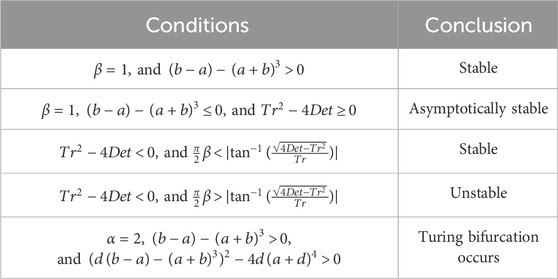
Table 1. Stability conditions of the model represented by Equation 2 at the equilibrium point
Next, by setting
3 Weakly non-linear analysis
Herein, we study the dynamic behaviors of the Schnakenberg model of Equation 1 with a diffusion term at
The corresponding characteristic equation of the Schnakenberg model of Equation 1 with a diffusion term at
where
The minimum value of the perturbation
Thus, we obtain the eigenroot as
The Schnakenberg model of Equation 1 experiences a Turing bifurcation when the following conditions are met:
Figure 2 shows the stability and Turing instability at different values of
where
A stable Turing spot map corresponds to a stable steady-state solution to Equation 14. Each amplitude in Equation 14 can now be decomposed into a magnitude
where
where
Since the second-order coefficients
For
The linear stability of the bar pattern is studied next. By substituting the steady-state solution
Because
The three eigenvalues are then obtained as
Since
4 Brief description of the numerical algorithm
The Fourier spectral method is a numerical approach for solving partial differential equations based on the Fourier series expansion and Fourier transform. In this work, we apply the fast Fourier transform to the Schnakenberg model of Equation 1 to obtain the following ordinary differential equations:
Then, the fourth-order Runge–Kutta method is used to solve the ordinary differential equations in Equation 23. This can greatly simplify the calculations and help solve the Schnakenberg model of Equation 1 effectively.
5 Numerical simulation
In the numerical simulations, the spatial domain is given by
Experiment 1 Consider the following Schnakenberg model:
with the following initial conditions [37]:
We set the parameters as
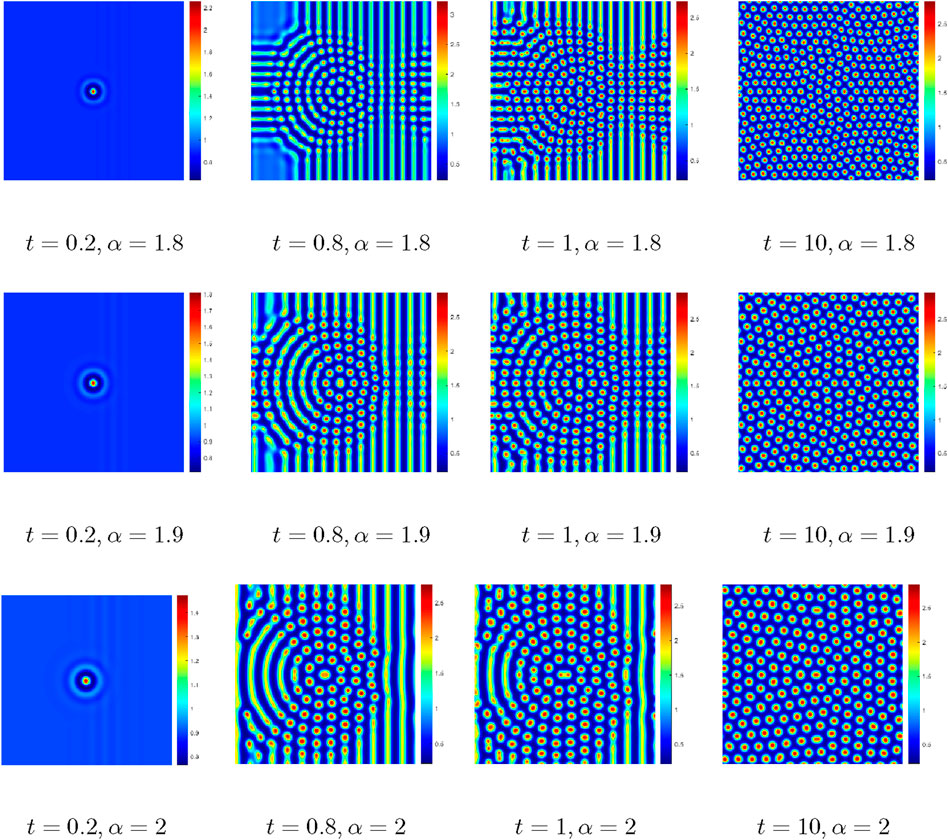
Figure 3. Comparison of the numerical results at different fractional orders with
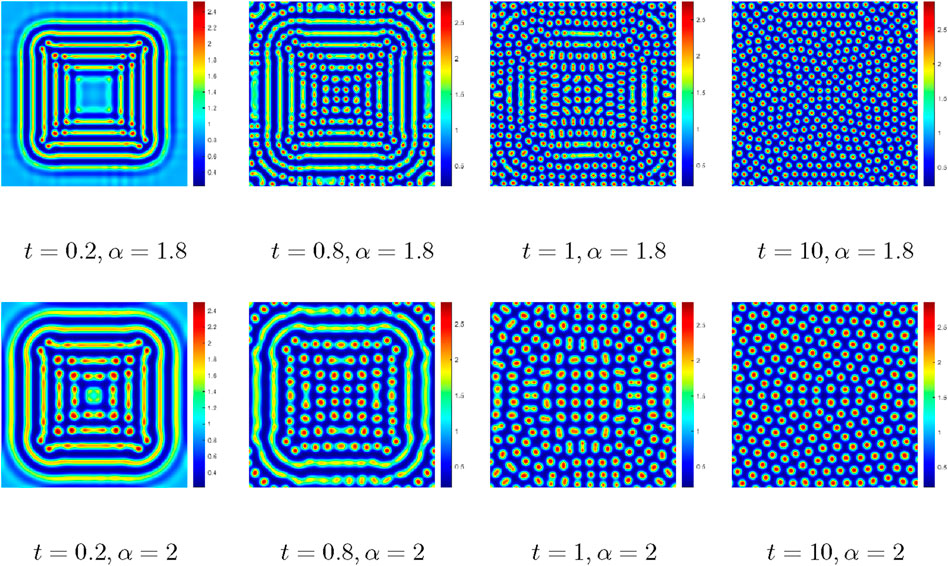
Figure 4. Comparison of the numerical results at different fractional orders with perturbations
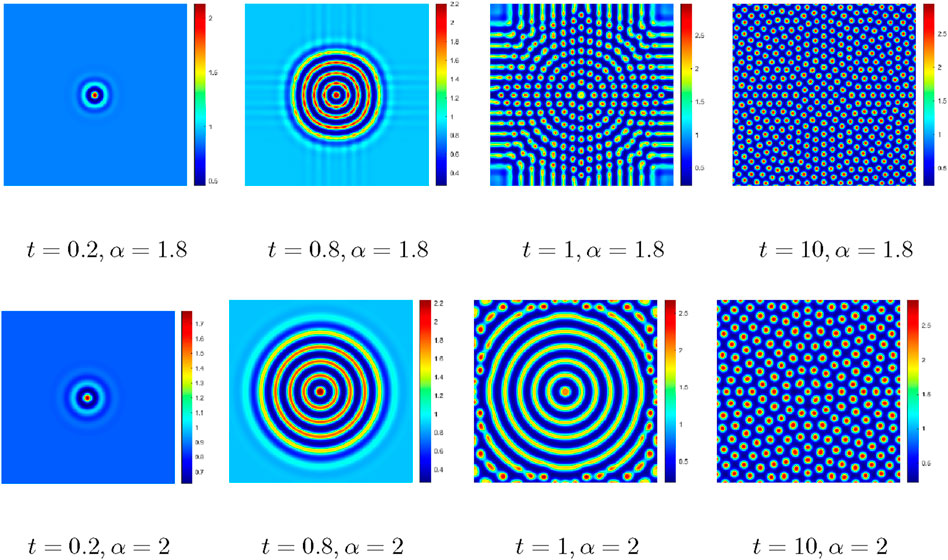
Figure 5. Comparison of the numerical results at different fractional orders with initial conditions of
Figure 3 shows different Turing patterns by setting the value of
From Figure 4, it is observed that the perturbation has a huge impact on the spot pattern. Figures 3, 4 have the same parameters and initial conditions, and changing the perturbation results in a large difference between the initial state and final spot pattern. However, these two figures have almost similar diffusion rates; thus, as
From Figures 3–5, we note that the formation of the pattern of the Schnakenberg model of Eq. Equation 24 depends on the selected parameters. Only those parameters that meet certain conditions produce the Turing pattern, and the fractional order affects the diffusion speed of this pattern. Variations in the initial conditions and perturbations will lead to differences in the pattern. The present numerical simulation results are in good agreement with the conclusions reported by Arafa et al. [37] using homotopy analysis for the fractional-order Schnakenberg model.
Experiment 2 Consider the Schnakenberg model of Equation 24 with periodic boundary conditions [38] as follows:
By setting the parameters as
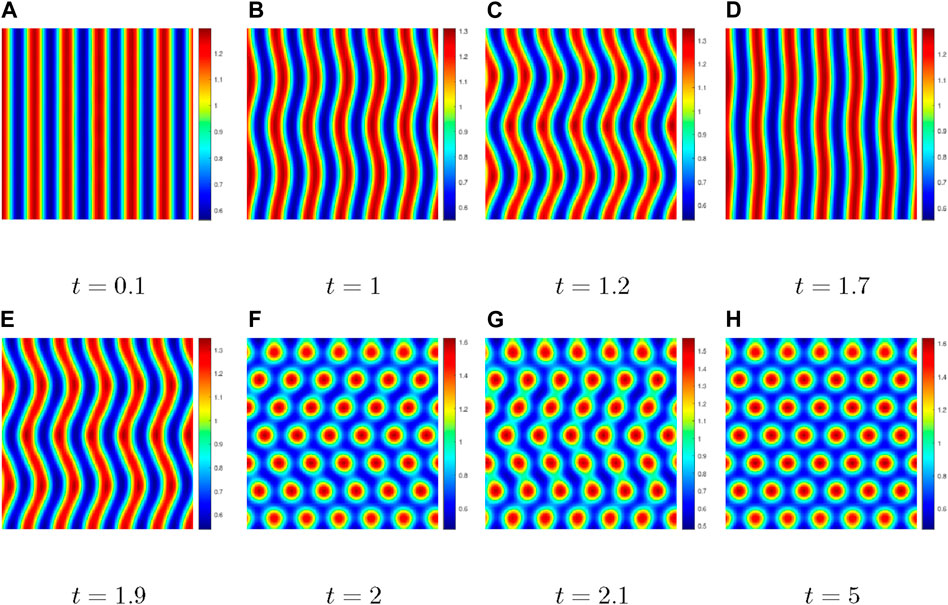
Figure 6. Comparison of the numerical results with
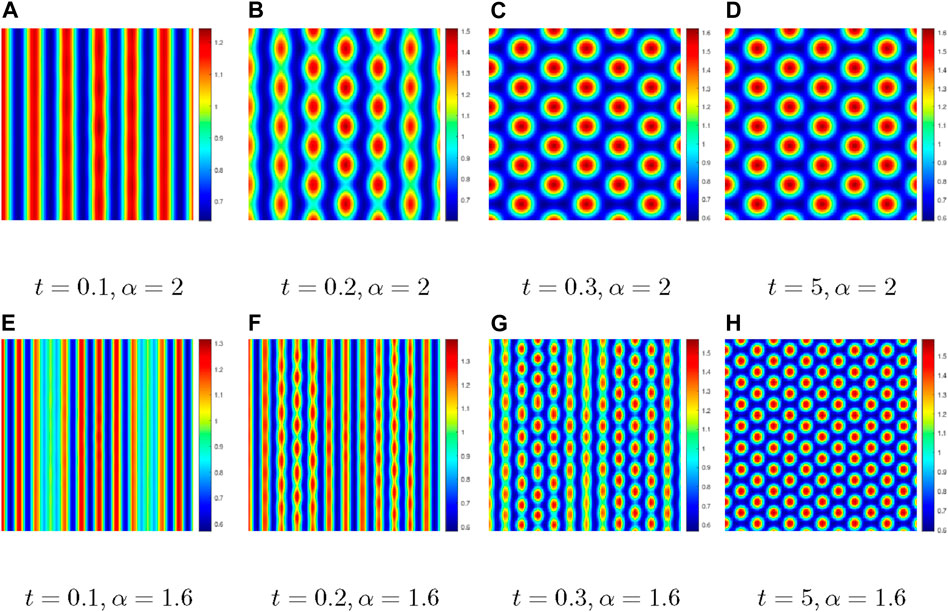
Figure 7. Comparison of the pattern dynamic behaviors with
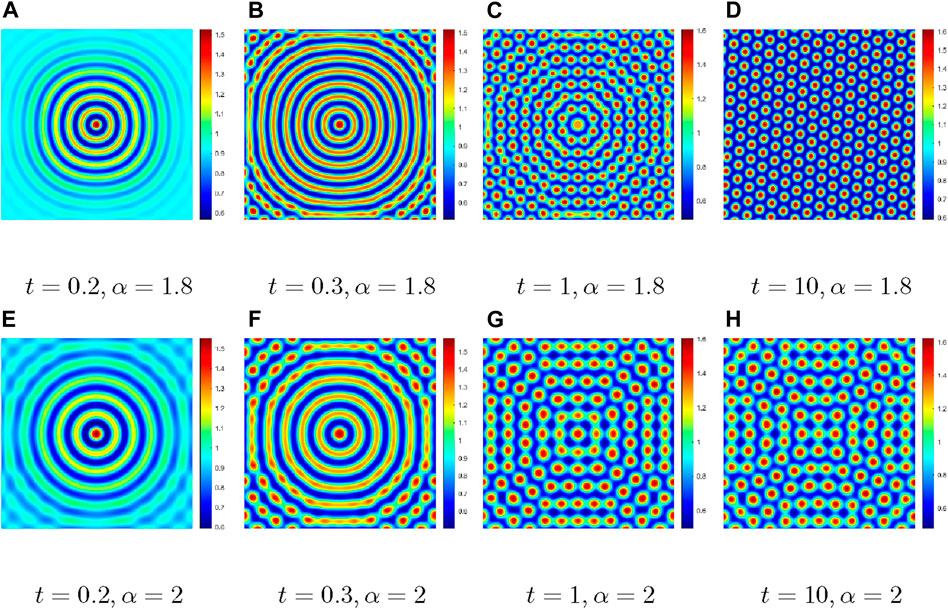
Figure 8. Comparison of the pattern dynamic behaviors at different fractional orders with
6 Conclusion
In this work, the Fourier spectral method was used to study the pattern dynamic behaviors of the fractional-in-space Schnakenberg model using multiple sets of parameters, initial conditions, perturbations, and fractional orders. After counting, different types of patterns were obtained, including the target, dot, and strip patterns. During the numerical simulations, we observed that the patterns not only diffused from a single point to a dense spot pattern but also split from the bar pattern into a spot pattern; further, it was observed that the point pattern could also merge into a bar pattern. We noted that the Turing model was very sensitive to the parameters and that the influences of the initial conditions on pattern formation cannot be ignored. The numerical results are in good agreement with findings based on other methods reported in literature. Some novel patterns were also observed in this work. The theoretical analysis and numerical simulation results of the fractional-in-space Schnakenberg model presented herein contribute to a broader understanding of the formation and dynamic behaviors of the Schnakenberg pattern. The roles of fractional operators in promoting diffusion are also better understood. In the future, we intend to develop hybrid methods by combining the Fourier spectral method with other numerical techniques to study some fractional-order partial differential equations [39, 40].
Data availability statement
The original contributions presented in the study are included in the article/Supplementary Material, and any further inquiries may be directed to the corresponding authors.
Author contributions
J-LW: conceptualization and writing–original draft. Y-XH: software and writing–review and editing. Q-TC: data curation, methodology, and writing–review and editing. Z-YL: formal analysis, funding acquisition, and writing–review and editing. M-JD: funding acquisition, and writing–original draft. Y-LW: data curation, resources, and writing–review and editing.
Funding
The authors declare that financial support was received for the research, authorship, and/or publication of this article. This work was supported by the Talent Development Foundation of Inner Mongolia Autonomous Region (to Ming-Jing Du), University Basic Research Funds Project of Inner Mongolia Autonomous Region (no. NCYWT23023), High-Quality Research Achievements Cultivation Fund of Inner Mongolia University of Finance and Economics (no. GZCG2487), Doctoral Research Startup Fund of Inner Mongolia University of Technology (nos. DC2300001252 and DC2200000935), and Natural Science Foundation of Inner Mongolia (no. 2024LHMS06025).
Conflict of interest
The authors declare that the research was conducted in the absence of any commercial or financial relationships that could be construed as a potential conflict of interest.
Publisher’s note
All claims expressed in this article are solely those of the authors and do not necessarily represent those of their affiliated organizations or those of the publisher, editors, and reviewers. Any product that may be evaluated in this article or claim that may be made by its manufacturer is not guaranteed or endorsed by the publisher.
References
1. Li CP, Wang Z. Numerical methods for the time fractional convection-diffusion-reaction equation. Numer Funct Anal Optimization (2021) 42(10):1115–53. doi:10.1080/01630563.2021.1936019
2. He JH, He CH, Qian MY, Alsolami AA. Piezoelectric Biosensor based on ultrasensitive MEMS system. Sensors Actuators A: Phys (2024) 376:115664. doi:10.1016/j.sna.2024.115664
3. He JH, Yang Q, He CH, Alsolami AA. Pull-down instability of the quadratic nonlinear oscillator, Facta Universitatis, Series. Mech Eng (2023) 21(2):191–200. doi:10.22190/fume230114007h
4. Gao XL, Li ZY, Wang YL. Chaotic dynamic behavior of a fractional-order financial system with constant inelastic demand. Int J Bifurcation Chaos (2024) 34(9):2450111. doi:10.1142/s0218127424501116
5. He JH, Jiao ML, He CH. Homotopy perturbation method for fractal duffing oscillators with arbitrary conditions. Fractals (2022) 30(9):2250165. doi:10.1142/s0218348x22501651
6. Li ZY, Chen QT, Wang YL, Li XY. Solving two-sided fractional super-diffusive partial differential equations with variable coefficients in a class of new reproducing kernel spaces. Fractal and Fractional (2022) 6(9):492. doi:10.3390/fractalfract6090492
7. Onarcan AT, Adar N, Dag I. Pattern formation of Schnakenberg model using trigonometric quadratic B-spline functions. Pramana-Journal Phys (2022) 96(3):138. doi:10.1007/s12043-022-02367-2
8. Khan FM, Ali A, Hamadneh N, Abdullah AMN. Numerical investigation of chemical Schnakenberg mathematical Model. J Nanomater (2021) 2021:1–8. doi:10.1155/2021/9152972
9. Fragnelli G, Mugnai D. Turing patterns for a coupled two-cell generalized Schnakenberg model. Complex Variables and Elliptic Equations (2020) 65(8):1343–59. doi:10.1080/17476933.2019.1631291
10. Din Q, Haider K. Discretization, bifurcation analysis and chaos control for Schnakenberg model. J Math Chem (2020) 58(8):1615–49. doi:10.1007/s10910-020-01154-x
11. Al Noufaey KS. Stability analysis for Selkov-Schnakenberg reaction-diffusion system. Open Mathematics (2021) 19(1):46–62. doi:10.1515/math-2021-0008
12. Yang R. Turing-Hopf bifurcation co-induced by cross-diffusion and delay in Schnakenberg system. Chaos, Solitons & Fractals (2022) 164:112659. doi:10.1016/j.chaos.2022.112659
13. Al Noufaey KS. A semi-analytical approach for the reversible Schnakenberg reaction-diffusion system. Results Phys (2020) 16:102858. doi:10.1016/j.rinp.2019.102858
14. Yang R. Cross-diffusion induced spatiotemporal patterns in Schnakenberg reaction-diffusion model. Nonlinear Dyn (2022) 110(2):1753–66. doi:10.1007/s11071-022-07691-1
15. Liu Y, Wei X. Turing-Hopf bifurcation analysis of the Sel’kov-Schnakenberg system. Int J Bifurcation Chaos (2023) 33(01):2350012. doi:10.1142/s0218127423500128
16. Xu Y, Ren J, Li X, Zhu D. On the Schnakenberg model with crucial reversible reactions. Math Methods Appl Sci (2024) 47(4):2452–71. doi:10.1002/mma.9757
17. Zhang H, Jiang X, Wang C, Chen S. Crank-Nicolson Fourier spectral methods for the space fractional nonlinear Schrödinger equation and its parameter estimation. Int J Computer Mathematics (2019) 96(2):238–63. doi:10.1080/00207160.2018.1434515
18. Zou G, Wang B, Sheu TWH. On a conservative Fourier spectral Galerkin method for cubic nonlinear Schrödinger equation with fractional Laplacian. Mathematics Comput Simulation (2020) 168:122–34. doi:10.1016/j.matcom.2019.08.006
19. Harris AP, Biala TA, Khaliq AQM. Fourier spectral methods with exponential time differencing for space-fractional partial differential equations in population dynamics. Numer Methods Partial Differential Equations (2023) 39(4):2963–74. doi:10.1002/num.22995
20. Lee HG. A second-order operator splitting Fourier spectral method for fractional-in-space reaction-diffusion equations. J Comput Appl Mathematics (2018) 333:395–403. doi:10.1016/j.cam.2017.09.007
21. Chen L, Lu S. Fourier spectral approximation for generalized time fractional Burgers equation. J Appl Mathematics Comput (2022) 68(6):3979–97. doi:10.1007/s12190-021-01686-8
22. Arezoomandan M, Soheili AR. Spectral collocation method for stochastic partial differential equations with fractional Brownian motion. J Comput Appl Mathematics (2021) 389:113369. doi:10.1016/j.cam.2020.113369
23. Qu H, She Z. Fourier spectral method with an adaptive time strategy for nonlinear fractional Schrodinger equation. Numer Methods Partial Differential Equations (2020) 36(4):823–38. doi:10.1002/num.22453
24. Weng Z, Zhai S, Feng X. A Fourier spectral method for fractional-in-space Cahn-Hilliard equation. Appl Math Model (2017) 42:462–77. doi:10.1016/j.apm.2016.10.035
25. Pindza E, Owolabi KM. Fourier spectral method for higher order space fractional reaction-diffusion equations. Commun Nonlinear Sci Numer Simulation (2016) 40:112–28. doi:10.1016/j.cnsns.2016.04.020
26. Fakhar-Izadi F, Shabgard N. Time-space spectral Galerkin method for time-fractional fourth-order partial differential equations. J Appl Mathematics Comput (2022) 68(6):4253–72. doi:10.1007/s12190-022-01707-0
27. Che H, Yu-Lan W, Zhi-Yuan L. Novel patterns in a class of fractional reaction-diffusion models with the Riesz fractional derivative. Mathematics Comput Simulation (2022) 202:149–63. doi:10.1016/j.matcom.2022.05.037
28. Han C, Wang YL, Li ZY. A high-precision numerical approach to solving space fractional Gray-Scott model. Appl Mathematics Lett (2022) 125:107759. doi:10.1016/j.aml.2021.107759
29. Kong XX, Yu F, Yao W, Cai S, Zhang J, Lin HR. Memristor-induced hyperchaos, multiscroll and extreme multistability in fractional-order HNN: image encryption and FPGA implementation. Neural Networks (2024) 171:85–103. doi:10.1016/j.neunet.2023.12.008
30. Wei JL, Wu GC, Liu BQ, Zhao ZG. New semi-analytical solutions of the time-fractional Fokker-Planck equation by the neural network method. Optik (2022) 259:168896. doi:10.1016/j.ijleo.2022.168896
31. Wu GC, Wei JL, Xia TC. Multi-layer neural networks for data-driven learning of fractional difference equations’ stability, periodicity and chaos. Physica D: Nonlinear Phenomena (2024) 457:133980. doi:10.1016/j.physd.2023.133980
32. Zhang LH, Liu Q, Ahmad B, Wang GT. Nonnegative solutions of a coupled k-Hessian system involving different fractional Laplacians. Fractional Calculus and Applied Analysis (2024) 27(4):1835–1851. doi:10.1007/s13540-024-00277-1
33. Yu F, Zhang W, Xiao X, Yao W, Cai S, Zhang J, et al. Dynamic analysis and field-programmable gate array implementation of a 5D fractional-order memristive hyperchaotic system with multiple coexisting attractors. Fractal and Fractional (2024) 8(5):271. doi:10.3390/fractalfract8050271
34. Gao XL, Zhang HL, Li XY. Research on pattern dynamics of a class of predator-prey model with interval biological coefficients for capture. AIMS Mathematics (2024) 9(7):18506–27. doi:10.3934/math.2024901
35. Gao XL, Zhang HL, Wang YL, Li ZY. Research on pattern dynamics behavior of a fractional vegetation-water model in arid flat environment. Fractal and Fractional (2024) 8(5):264. doi:10.3390/fractalfract8050264
36. Chen MX, Zheng QQ. Diffusion-driven instability of a predator-prey model with interval biological coefficients. Chaos, Solitons and Fractals (2023) 172:113494. doi:10.1016/j.chaos.2023.113494
37. Arafa AAM, Rida SZ, Mohamed H. Approximate analytical solutions of Schnakenberg systems by homotopy analysis method. Appl Math Model (2012) 36(10):4789–96. doi:10.1016/j.apm.2011.12.014
38. Vivek SY, Vikas M, Manoj KR, Jyoti J. Spatiotemporal pattern formations in stiff reaction-diffusion systems by new time marching methods. Appl Mathematics Comput (2022) 431:127299. doi:10.1016/j.amc.2022.127299
39. Zhang RF, Li MC, Cherraf A, Vadyala SR. The interference wave and the bright and dark soliton for two integro-differential equation by using BNNM. Nonlinear Dyn (2023) 111(9):8637–46. doi:10.1007/s11071-023-08257-5
Keywords: stability, Turing instability, weakly non-linear analysis, numerical simulation, Schnakenberg model, pattern dynamics, Fourier spectral method
Citation: Wang J-L, Han Y-X, Chen Q-T, Li Z-Y, Du M-J and Wang Y-L (2024) Numerical simulation and theoretical analysis of pattern dynamics for the fractional-in-space Schnakenberg model. Front. Phys. 12:1452077. doi: 10.3389/fphy.2024.1452077
Received: 20 June 2024; Accepted: 07 August 2024;
Published: 11 September 2024.
Edited by:
Fei Yu, Changsha University of Science and Technology, ChinaReviewed by:
Run-Fa Zhang, Shanxi University, ChinaDan Tian, Xi’an University of Architecture and Technology, China
Copyright © 2024 Wang, Han, Chen, Li, Du and Wang. This is an open-access article distributed under the terms of the Creative Commons Attribution License (CC BY). The use, distribution or reproduction in other forums is permitted, provided the original author(s) and the copyright owner(s) are credited and that the original publication in this journal is cited, in accordance with accepted academic practice. No use, distribution or reproduction is permitted which does not comply with these terms.
*Correspondence: Yu-Lan Wang, d3lsbmVpQDE2My5jb20=, d3lsbmVpQGltdXQuZWR1LmNu
 Ji-Lei Wang1
Ji-Lei Wang1 Yu-Lan Wang
Yu-Lan Wang
